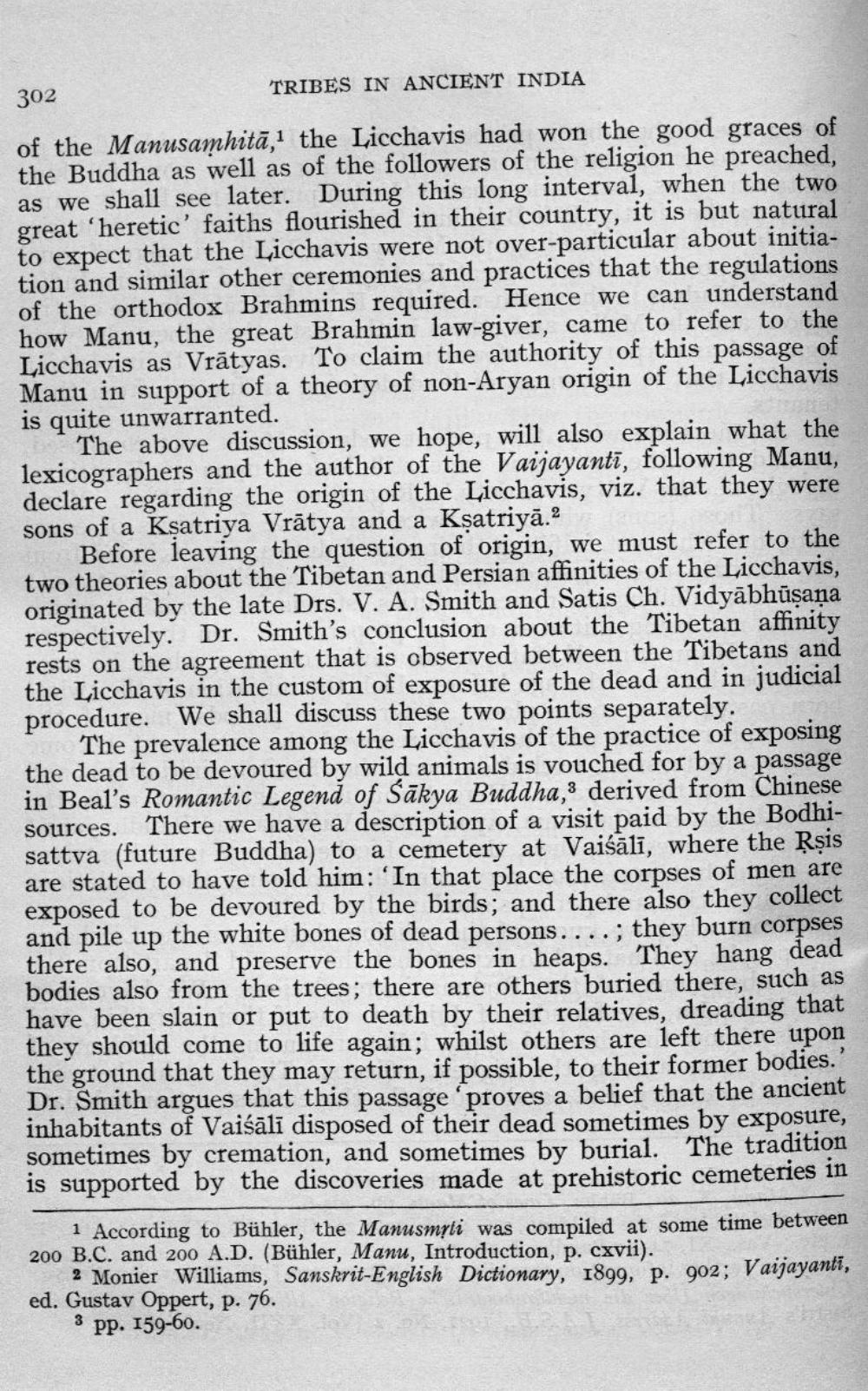________________
302
TRIBES IN ANCIENT INDIA of the Manusamhitā, the Licchavis had won the good graces of the Buddha as well as of the followers of the religion he preached, as we shall see later. During this long interval, when the two great 'heretic' faiths flourished in their country, it is but natural to expect that the Licchavis were not over-particular about initiation and similar other ceremonies and practices that the regulations of the orthodox Brahmins required. Hence we can understand how Manu, the great Brahmin law-giver, came to refer to the Licchavis as Vrātyas. To claim the authority of this passage of Manu in support of a theory of non-Aryan origin of the Licchavis is quite unwarranted.
The above discussion, we hope, will also explain what the lexicographers and the author of the Vaijayantī, following Manu, declare regarding the origin of the Licchavis, viz. that they were sons of a Ksatriya Vrātya and a Ksatriyā.2
Before leaving the question of origin, we must refer to the two theories about the Tibetan and Persian affinities of the Licchavis, originated by the late Drs. V. A. Smith and Satis Ch. Vidyābhūsaņa respectively. Dr. Smith's conclusion about the Tibetan affinity rests on the agreement that is observed between the Tibetans and the Licchayis in the custom of exposure of the dead and in judicial procedure. We shall discuss these two points separately.
The prevalence among the Licchavis of the practice of exposing the dead to be devoured by wild animals is vouched for by a passage in Beal's Romantic Legend of Śākya Buddha, derived from Chinese sources. There we have a description of a visit paid by the Bodhisattva (future Buddha) to a cemetery at Vaiśālī, where the Rșis are stated to have told him: 'In that place the corpses of men are exposed to be devoured by the birds, and there also they collect and pile up the white bones of dead persons....; they burn corpses there also, and preserve the bones in heaps. They hang dead bodies also from the trees; there are others buried there, such as have been slain or put to death by their relatives, dreading that they should come to life again; whilst others are left there upon the ground that they may return, if possible, to their former bodies.' Dr. Smith argues that this passage 'proves a belief that the ancient inhabitants of Vaiśālī disposed of their dead sometimes by exposure, sometimes by cremation, and sometimes by burial. The tradition is supported by the discoveries made at prehistoric cemeteries in
| 1 According to Bühler, the Manusmrti was compiled at some time between 200 B.C. and 200 A.D. (Bühler, Manu, Introduction, p. cxvii).
2 Monier Williams, Sanskrit-English Dictionary, 1899, p. 902; Vaijayanti, ed. Gustav Oppert, p. 76.
3 pp. 159-60.




